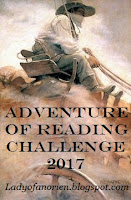 The subtitle of this book makes it sound like this will be 340 pages about how the 1956 movie The Searchers was made. But actually, only the last few chapters are about filming the movie. Instead, the book begins by trying to sort fact from fiction regarding the real-life abduction by Comanche warriors which inspired the book that was in turn made into the film.
The subtitle of this book makes it sound like this will be 340 pages about how the 1956 movie The Searchers was made. But actually, only the last few chapters are about filming the movie. Instead, the book begins by trying to sort fact from fiction regarding the real-life abduction by Comanche warriors which inspired the book that was in turn made into the film.On the cover, you see a picture of John Wayne from the movie on the left. On the right is a photograph of Cynthia Ann Parker, who was captured by the Comanche as a girl, and who lived with them for more than twenty years, married one of her captors, and bore several children with him. She was then recaptured by white people and returned to her relatives in Texas, but she was not happy living with them and died a few years later. One of her uncles tried to find her for many years, which is what eventually inspired a writer named Alan LeMay to write a book about an uncle relentlessly seeking his abducted niece. And that's the book that John Ford turned into a movie.
I happen to be quite fascinated by stories of people being raised in cultures far different from their own, as well as stories of people trying to survive on the frontier, so the book as a whole kept me quite interested. If you only want to learn stuff about the movie, then skip to part IV, called "Pappy and the Duke." You'll learn a ton about the careers and friendship of John Ford and John Wayne, especially how those informed the making of the film.
I learned so much from this book, not just about the making of The Searchers, but about the history of Texas, the endless problems when two disparate cultures rub up against each other, and the way people tell stories to suit their own agendas.
Particularly Good Bits:
Whatever the particular plotline, the Western was grounded in the enduring foundational myth that the American frontier was an untouched, pure new world, and a place to test one's mettle and faith. The land was a metaphor for the mission: taming the savage wilderness, after all, meant taming one's own soul (p. 186).
Frank Nugent said he learned a lot from John Ford. "Character is not shown so much by what is said as by what is done," Nugent wrote when he first started working with Ford. "Characters must make decisions" (p. 255).
The writer's primary job, he adds, is simple: "To look long and hard at his story and see whether it can be reduced to terms of the upsetting of the status quo" (p. 256).
If This was a Movie, I Would Rate It: R for many, many discussions of violence and rape, and some language.
This is my second book read and reviewed for the Adventure of Reading Challenge 2017.


No comments:
Post a Comment
What do you think?
Comments on old posts are always welcome! Posts older than 7 days are on moderation to dissuade spambots, so if your comment doesn't show up right away, don't worry -- it will once I approve it.
(Rudeness and vulgar language will not be tolerated.)